Part 12: Bad Day in the Ozark
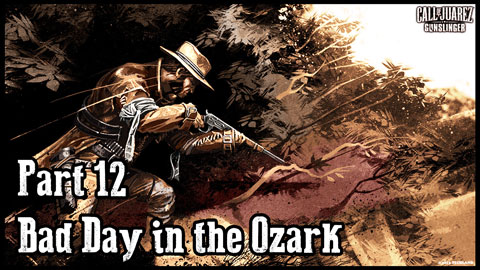
We set out to settle one of our old grudges and meet a guy atop a hill. There’s also some cool stuff that happens in between, but find out yourself.
We’re moving into the end-stages of this LP by now, there’s only one more (quite tricky) part to go. I’ve also got a video of the entire dueling mode ready to go, but if there’s anything else you want to see, now’s the time to remind me.
There’s a total of 10 arcade levels and I’ve only shown one so far. I’m not sure whether I could get a similar performance on the others as I did with the last one. I’d rather do them well than half-ass them, but some just aren’t much fun. Like the mostly stationary ones such as in the Bandit/Apache canyon or atop the bank for the Daltons level. Still, I don’t mind trying if there’s interest for some of the arcade levels.
Concept art

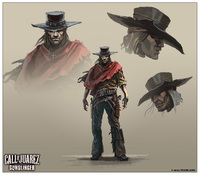
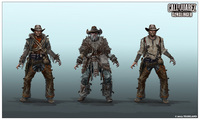
Nuggets of Truth
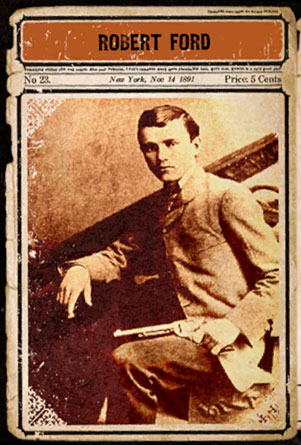
Robert Newton Ford, known as "the man who shot Jesse James," or as the "dirty little coward," is the closest thing to a Judas of the Wild West. This man, who Jesse considered a friend, who let him live under his own roof, shot Jesse in the back, hoping to collect the bounty on the famous outlaw. Robert Ford in turn also died from a surprise shot by one Edward O’Kelley, whose only motivation was to become the man who shot the man who killed Jesse James. He succeeded.
Robert Ford's was also immortalized in a way by Jesse James' mother who ordered the following to be engraved on her son's gravestone: "In Loving Memory of My Beloved Son, Murdered by a Traitor and Coward whose name is not worthy to appear here." Such fame isn't worth much, putting Ford in the disreputable company of other murdering cowards like Jack McCall and John Selman Jr.

Thomas Coleman Younger was the oldest of the Youngers and, next to the James brothers, a key figure in the James-Younger Gang. As a soldier and a Confederate partisan during the Civil War, he rode with Quantrill's Raiders and took part in the infamous massacre of two hundred men and boys in Lawrence, Kansas. After the war, he targeted banks belonging to former Union officers and Republican politicians.
In 1876, after a botched robbery in Northfield, Minnesota, the Younger brothers were captured. Cole remained in prison until 1901. He died in 1916, four years after converting to Christianity. Until the last days of his life, he considered himself more of a Confederate soldier than a criminal. He admitted that his only real crime was the unfortunate gunfight in Northfield, Minnesota, which cost him 24 years of his life in prison.
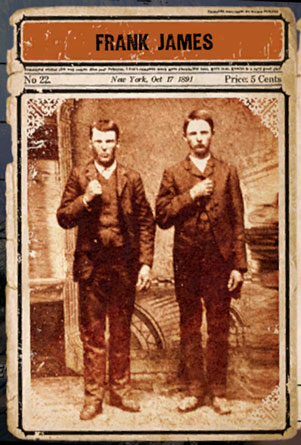
Alexander Franklin James is remembered primarily as Jesse James' older brother, a guerilla fighter during the Civil War and a co-leader of the James-Younger Gang. During the war, he joined the ranks of Quantrill's Rangers and allegedly participated in the infamous massacre of two hundred men and boys in Lawrence, Kansas.
He continued his "war" against the Union by robbing banks and trains. Five months after his brother's murder, Frank James surrendered to the Governor of Missouri, saying, "I have been hunted for twenty-one years, have literally lived in the saddle, have never known a day of perfect peace. It was one long, anxious, inexorable, eternal vigil." He then ended his statement by saying, 'Governor, I haven't let another man touch my gun since 1861." To everyone's surprise he was never sentenced for his crimes.
He died at the respectable age of 72, in 1915, after trying his hand at many different jobs, including offering guided tours of the James' family farm for twenty-five cents a pop.
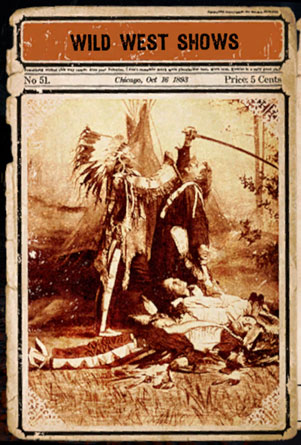
When we think of the Wild West we imagine cowboys driving enormous herds of cattle, saloons with dancing girls, gunfights at high noon, stagecoach robberies, and handsome heroes coming to the rescue. Every bit of it is sensational, romanticized claptrap. So where did our idea of the American Frontier of the 19th century come from?
William Frederick Cody or Buffalo Bill (his nickname earned by slaughtering over 4000 bison in the course of 18 months to feed railroad workers) sold this picture of the Old West to an eastern audience (both American and European) with "Buffalo Bill's Wild West," a live show combining elements of the circus and the theater. To the audience's delight, Cody recreated various historical events, showcased famous and authentic celebrities (Wild Bill Hickok, Annie Oakley and Sitting Bull among others starred in his shows), presented ‘iconic’ situations associated with life on the Frontier, employed sharpshooters, riders, and real Native American Indians. It was a perfect idealized version of the Wild West set to rousing music.
Cody had numerous imitators and attending the so-called "Wild West Shows" became very popular pastime east of the Mississippi. Even outlaw celebrities like Cole Younger or Frank James had their own traveling shows. To this day, American rodeos are not too far removed from those early displays of Wild West daring do.